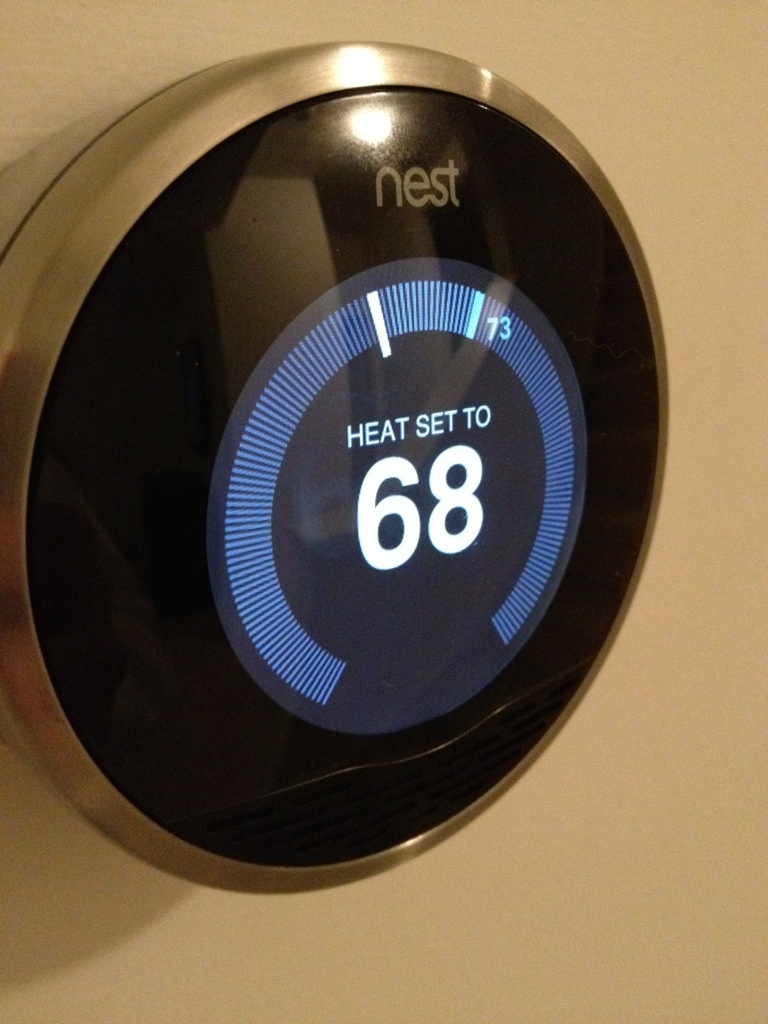Is This The Year Of The Internet Of Things?

Promises of a better, more futuristic, more connected world has been floating around since the dot-com bubble of the 90s. Automated homes, self-driving cars, and automatic everythings have followed a cycle of hype and disappointment for over a decade. However, it appears that this cycle might finally be shifting.
The “Internet of Things” is a term used since the early 90s to describe using RFID, NFC, and other advanced and highly miniaturized communication components to connect everyday objects to a centralized hub. Industry technology expert Jason Hope said, “The Internet of Things is one of the primary goals of technologists. The ability to control your environment from a smartphone will revolutionize the way we live.”
Everything from your coffee maker, to your air conditioning, and even your car will eventually be controllable from your smartphone or other networked device. The Internet of Things will dramatically increase the independence of seniors and the disabled, and will eventually make it possible to do things like automatically order and ship groceries to your home when the RFID or NFC chips inside each item indicates that you are running low.
Imagine this scenario: You wake up feeling rested, thanks to the automatically opened window shades, ambient lighting, and gradually increasing sound of your alarm clock. You head to the kitchen, where a pot of coffee at the perfect drinking temperature is ready for you. You then head to the bathroom, where the shower has turned on just soon enough to be hot without wasting any unnecessary water.
As you eat your cereal (which arrived at your front door this morning), your car starts up and cools the vehicle to your preferred temperature. When you open the door to your car and pull out of your driveway, several things occur: your favorite music station turns on, your garage door closes automatically, the home air conditioning shuts off (don’t worry, it’ll turn back on right before you get home), the doors lock and the alarm is set.
You then sit back and enjoy the newspaper on your car’s touchscreen display as you are automatically driven to work.
This scenario is the dream that Internet of Things proponents are promising. The only question now is when will the necessary technologies be available and affordable for the average consumer?
According to ABI Research, the number of independently connected and wireless devices is set to triple, from 10 billion to 30 billion, by 2020. The increasing number of gadgets and applications, at CES and elsewhere, is projected to increase consumer demand and adoption of Internet of Things products and devices. The only way that this demand and adoption will grow is by extensive research and development from the major technology firms.
CES 2014 was the place that many of the top companies entering the IoT market showed off their newest devices. Some of the highlights include:
Nest was recently purchased by Google, and reflects their desire to expand into emerging markets. The Nest thermostat connects to your home Wi-Fi network, which in turn connects to your smartphone. This allows you to control your thermostat from wherever you happen to be, meaning you can turn the heat or air conditioning on 10 minutes before you arrive, saving energy and maximizing personal comfort.
Samsung’s new Shape Speakers are able to connect to cloud-based music using a wireless internet connection. This means that you can bring these speakers anywhere (or simply leave them in the home) and play music that is stored in a remote location on the Cloud.
One of the most promising IoT technologies, the innovative lights by Phillips will connect to your home’s Wi-Fi, and be controllable from your smartphone.
Despite these intriguing advances, most experts will agree that the overall IoT industry is still very much in its infancy. It will require a significantly high consumer demand and billions more in R&D before the dream scenario of a fully automated home becomes a reality.
License: Image author owned
About Author: Amy Taylor is a technology and business writer. Amy began her career as a small business owner in Phoenix, Arizona. She has taken that knowledge and experience and brought that to her unique writing capabilities. She really enjoys new business related issues that are tied directly to technology.
